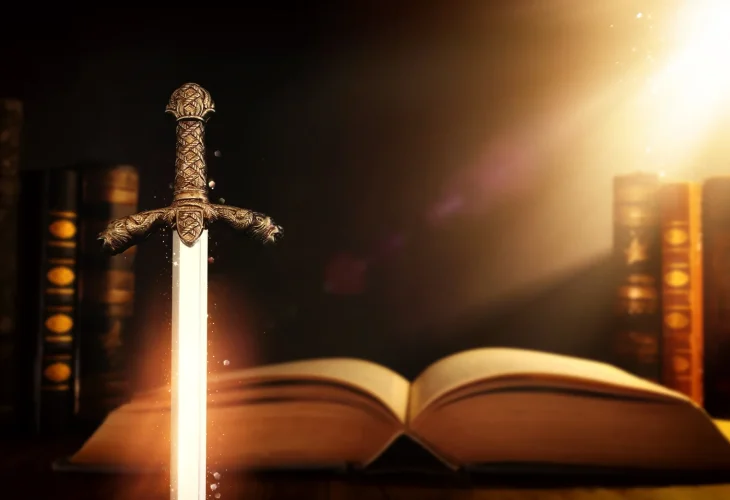Who Was Bar Kokhba? The Story of the Great Revolt and the Fall of Betar
In this revolt, Bar Kokhba was the undisputed leader. Legends say he could catch stone missiles mid-air and hurl them back at the enemy. His soldiers were said to uproot cedar trees while riding on horseback.
 (Photo: Shutterstock)
(Photo: Shutterstock)The period between the straits and Tisha B'Av marks a tragic chapter in Jewish history. From the destruction of the First and Second Temples to the expulsion from Spain, if something unfortunate was to happen to the Jewish people, it often occurred on Tisha B'Av. One of the most significant events on this date was the destruction of Betar, marking the failure of Bar Kokhba's revolt. This defeat resulted in the devastation of the Land of Israel and the Jewish people's exile.
The Bar Kokhba revolt, also known as the "Great Revolt," was led by Shimon Bar Kokhba sixty years after the Second Temple's destruction. After the temple's fall, Jews anxiously awaited the chance to rebuild Jerusalem and the Temple. In 130 CE, Emperor Hadrian arrived for a ceremonial visit to Jerusalem. Jews believed this was the moment they had been waiting for, assuming Hadrian would authorize the reconstruction of the Temple.
However, Hadrian's visit was a disappointment for the Jews. Instead of rebuilding the Temple, Hadrian came to erase it from the agenda. He planned to construct a pagan city, "Aelia Capitolina," on Jerusalem's ruins, with a temple dedicated to the Roman god Jupiter at its center.
Hadrian's plan sparked frustration and anger among Jews, leading to calls for rebellion against the Romans throughout Israel. The revolt didn't start abruptly. The rebels patiently prepared by stockpiling weapons, digging fortified tunnels across the land, and forming trained military units.
Jews devised a clever method to obtain weapons. Part of the Roman tax system required Jews to manufacture weapons for the Romans. The Jews slightly damaged the weapons they produced, making them undesirable for the Romans seeking high-quality arms, allowing them to amass weapons for their revolt.
Unlike previous revolts, the rebels didn't rely on fortified cities but large tunnel networks. These were constructed so Roman soldiers couldn't enter with heavy armor or in large groups, nullifying the Romans' advantage in frontal assaults.
Bar Kokhba led the revolt. Unlike previous rebellions where no single leader emerged, Bar Kokhba was an undisputed leader in this revolt. It was said he could catch stone missiles mid-flight and throw them back at the enemy. His soldiers were reputedly able to uproot cedar trees while riding horses.
To this day, tales of Bar Kokhba's heroism resonate. The Gemara and various midrashim depict his impressive stature, even Rabbi Akiva believed he was the Messiah and interpreted the verse "a star will come out of Jacob" about him.
Initially, the Jews achieved significant success in the revolt. Using Bar Kokhba's guerrilla tactics, they gradually pushed the Romans out. They initially defeated the Roman legion guarding Jerusalem and even repelled reinforcements coming to help the Romans from Gezer. The rebels' successes led them to mint coins depicting the Temple with "freedom for Jerusalem" inscribed on the reverse.
The Romans soon brought reinforcements from Egypt, Syria, and neighboring regions. However, these reinforcements didn't help the Romans suppress the revolt. Entire Roman legions were decimated. Emperor Hadrian was desperate and summoned Julius Severus, Rome's most skilled revolts general, from Britain.
Julius Severus arrived from Britain with a massive troop reinforcement, about half of Rome's army was in Judea at that time. Never had Rome struggled so much to quell a revolt.
With Severus's arrival, the tide turned in favor of the Romans. The ruthless Severus used attrition tactics. He ordered soldiers to burn every Jewish village they encountered, and when Jewish fighters fled to tunnels, the soldiers would set fires at the entrance, suffocating the Jews inside. If the rebels left the tunnels, Roman archers awaited them, killing all. Romans isolated rebel areas, subduing them one by one.
Gradually, the rebels were pushed out from all conquered places, finally retreating to the city of Betar. The Romans besieged Betar, eventually overpowering it. The number of dead was unimaginable, even more than during the Temple's destruction, estimating around one and a half million deaths due to the revolt. Only the Holocaust had larger numbers. Historians say following the revolt, a Jewish slave's price dropped to that of a horse's fodder portion due to the overflow of Jewish slaves. The entire land was devastated, and Jews were exiled once more on Tisha B'Av, just a few years after the Temple fell.
For years, little was known about Bar Kokhba, not even his precise name. Jewish sources referred to him as Ben Koziva, while Roman historian Eusebius called him Bar Kokhba.
It wasn't until 1953 when the Cave of Letters was discovered, revealing orders written by Bar Kokhba to his commanders. These letters give us a glimpse into Bar Kokhba's strong and charismatic personality and his concern for his soldiers. In one letter, Bar Kokhba requests his soldiers be sent the four species for Sukkot.
Despite the harsh outcomes of the revolt, one cannot help but admire the Jews' persistence and courage in their efforts to rebuild the Temple. This same persistence led Jews to adhere to their faith, regardless of the obstacles. That faith preserved our identity as Jews and has brought us to the Land of Israel.

